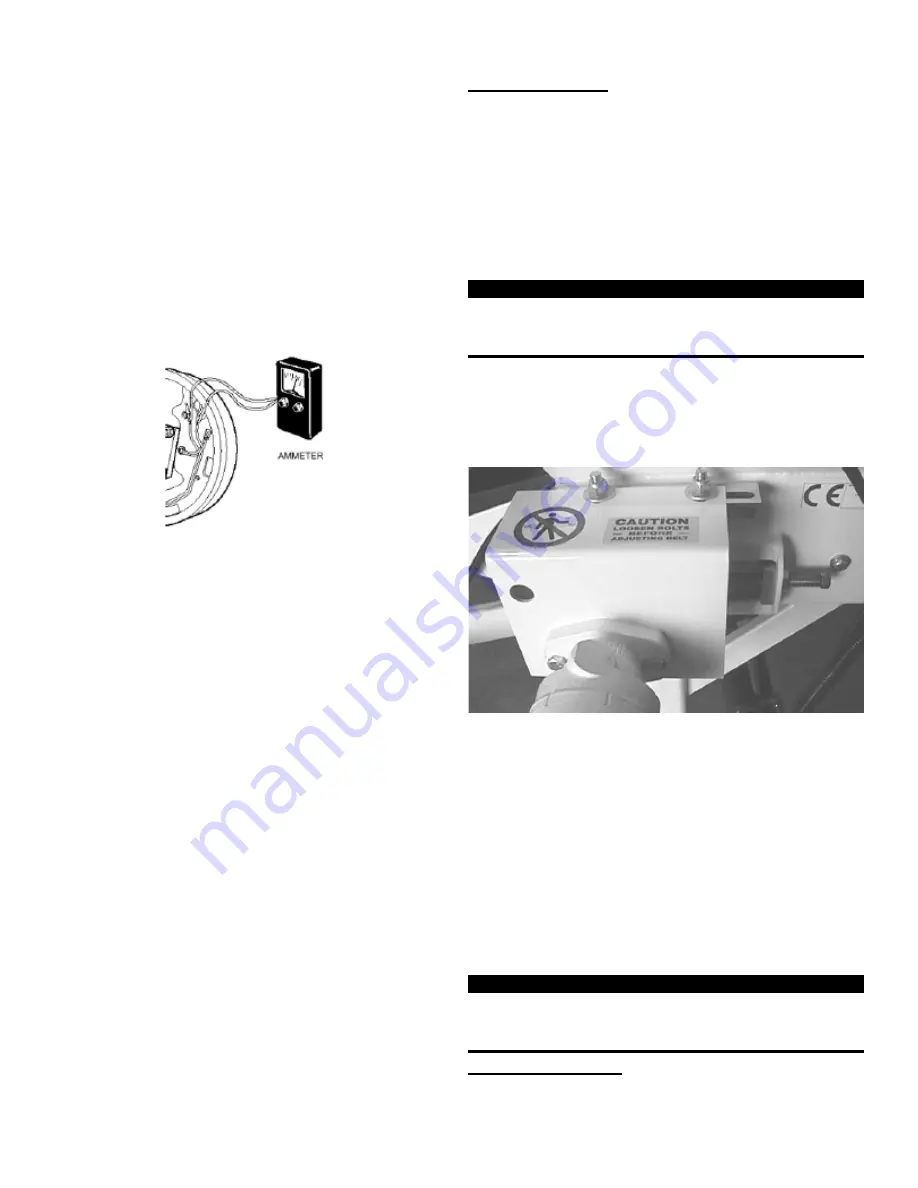
9
MEASURING AMPERAGE
System amperage is the amperage being drawn by all
brakes on the Turf Tender. The engine of the towing vehicle
should be running when checking amperage.
Measure system amperage at the BLUE controller wire
(the output to the brakes). The BLUE wire must first be
disconnected and the ammeter put in series into the line. Make
sure the ammeter has sufficient capacity to handle the current
draw of about 6 amps. To prevent damaging the ammeter, be
sure to observe polarity.
Individual amperage draw can be measured by inserting
the ammeter in the line at the magnet you want to check.
Disconnect one of the magnet lead wire connectors and attach
the ammeter between the two wires. Make sure that the wires
are properly connected and sealed after the testing is
completed.
By far, the most common electrical problem is either
low or no voltage and amperage at the brakes.
Common
causes of this condition are:
1. Poor electrical connections
2. Open circuit(s)
3. Insufficient wire size
4. Broken wires
5. Damaged circuit breaker (use of a fuse is not recommended).
6. Improperly functioning switch, controller, or resistors
Another brake system electrical problem may be shorted
or partially shorted circuits (indicated by abnormally high
system amperage). These are occasionally the most difficult
to find. Possible causes are:
1. Shorted magnet coils
2. Defective controller
3. Bare wires contacting a grounded object
Finding a short in the wiring system is a matter of isolation.
If the high amperage reading drops to zero by unplugging the
wiring harness, the short is in the Turf Tender. If the amperage
reading remains high with all the brake magnets disconnected,
the short is in the wiring leading to the Turf Tender.
All electrical troubleshooting procedures should start at the
control box switch and then to the controller. Most problems
regarding brake harshness or malfunctions are traceable to
improperly adjusted or non-functioning controllers. See the
controller information for proper adjustment and testing
procedures previously discussed. If the voltage and amperage
are not satisfactory, proceed to the connector and then to the
individual magnets to isolate the problem source. 12 volts output
at the controller should equate to 10.5 volts minimum at each
magnet.
Nominal system amperage at 12 volts with
magnets at normal operating temperatures (i.e. not cold
and controller at maximum gain) should be about 6 amps
with full braking force applied.
HOPPER CONVEYOR BELT
Belt Adjustment
Due to stretching of the belting material with use, it will be
necessary to periodically tighten the conveyor belt. Pressure
on the belt and warm temperatures will increase the frequency
of belt tightening. The belt should be loosened if the Turf Tender
will not be used for an extended period of time or will be
moving to a colder operating temperature due to seasonal or
geographic changes.
NOTE: If the belt was loosened for storage or any
other reason, the belt will need to be tightened
before using the Turf Tender.
CAUTION
Always tighten the belt at the front roller. Adjusting
the rear roller will affect the material placement on
the twin spinners and may affect belt tracking.
To tighten the main conveyor belt, use the following
procedure:
1. On drive motor side of the Turf Tender, loosen the two
nuts securing the drive motor mount to the hopper frame.
2. Loosen the jam nut on each of the tensioning bolts.
3. Using a ¾ inch wrench, turn each tensioning bolt clockwise
1-2 complete turns. Be sure to make equal adjustments
on both sides.
NOTE: Failure to adjust the belt equally on both
sides could result in improper belt alignment and
damage to the belt. If the belt doesn’t stay on track,
the belt may not be tightened equally on both sides.
4. Test the belt to see if it is properly tensioned.
5. When the belt is properly tensioned, secure the adjustment
by tightening the two jam nuts against the frame and the
two drive motor mount nuts.
6. Run the conveyor to make sure belt doesn’t slip and
remains running on track.
WARNING
Do not attempt to tighten the conveyor belt when
the tractor is running or with the Turf Tender
operating.
Belt Replacement
SPLICED BELT
If it becomes necessary to replace the spliced main
conveyor belt, use the following procedure:
MAINTENANCE
























